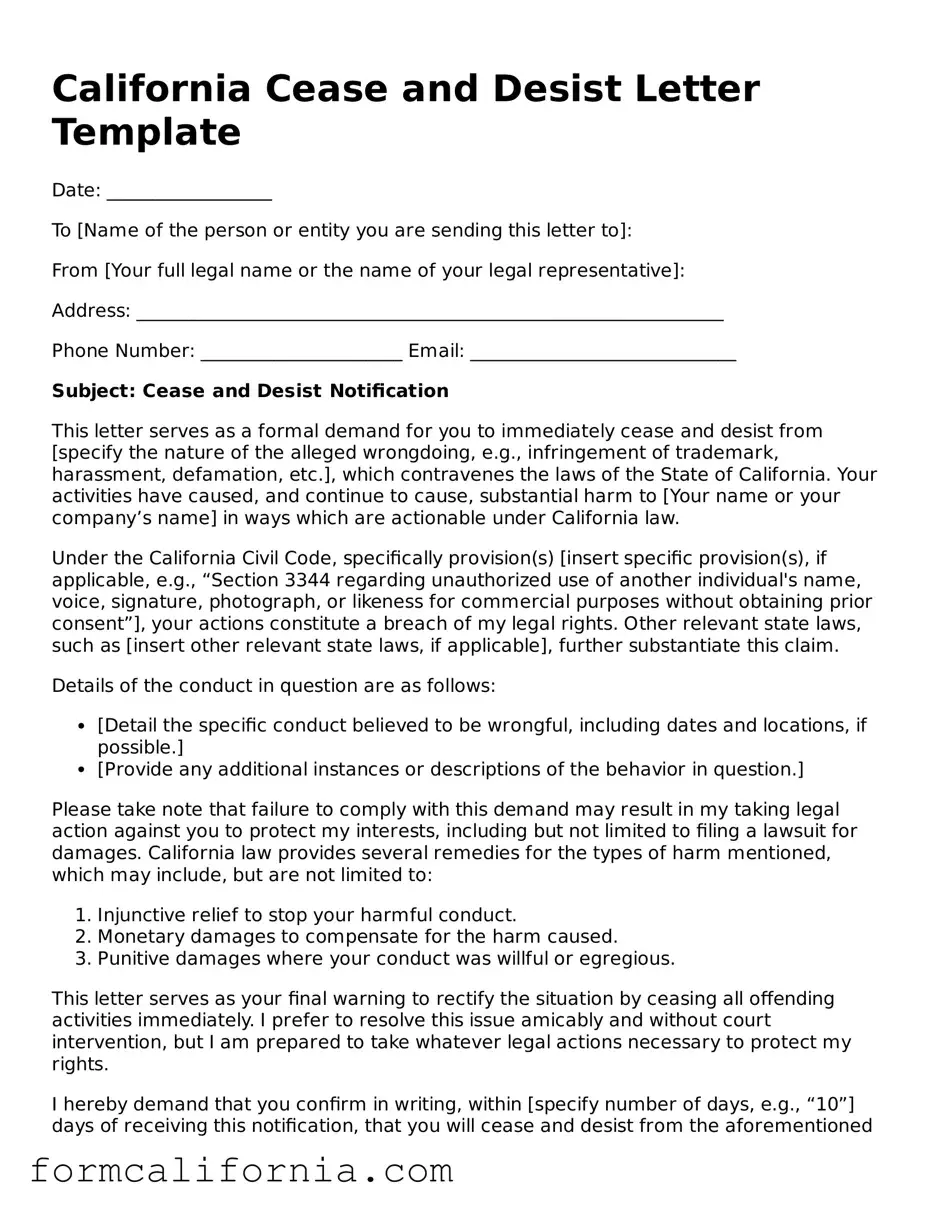California Cease and Desist Letter Template
Date: __________________
To [Name of the person or entity you are sending this letter to]:
From [Your full legal name or the name of your legal representative]:
Address: ________________________________________________________________
Phone Number: ______________________ Email: _____________________________
Subject: Cease and Desist Notification
This letter serves as a formal demand for you to immediately cease and desist from [specify the nature of the alleged wrongdoing, e.g., infringement of trademark, harassment, defamation, etc.], which contravenes the laws of the State of California. Your activities have caused, and continue to cause, substantial harm to [Your name or your company’s name] in ways which are actionable under California law.
Under the California Civil Code, specifically provision(s) [insert specific provision(s), if applicable, e.g., “Section 3344 regarding unauthorized use of another individual's name, voice, signature, photograph, or likeness for commercial purposes without obtaining prior consent”], your actions constitute a breach of my legal rights. Other relevant state laws, such as [insert other relevant state laws, if applicable], further substantiate this claim.
Details of the conduct in question are as follows:
- [Detail the specific conduct believed to be wrongful, including dates and locations, if possible.]
- [Provide any additional instances or descriptions of the behavior in question.]
Please take note that failure to comply with this demand may result in my taking legal action against you to protect my interests, including but not limited to filing a lawsuit for damages. California law provides several remedies for the types of harm mentioned, which may include, but are not limited to:
- Injunctive relief to stop your harmful conduct.
- Monetary damages to compensate for the harm caused.
- Punitive damages where your conduct was willful or egregious.
This letter serves as your final warning to rectify the situation by ceasing all offending activities immediately. I prefer to resolve this issue amicably and without court intervention, but I am prepared to take whatever legal actions necessary to protect my rights.
I hereby demand that you confirm in writing, within [specify number of days, e.g., “10”] days of receiving this notification, that you will cease and desist from the aforementioned activities. Failure to respond to this letter will be construed as a refusal to comply, necessitating legal proceedings.
Thank you for your immediate attention to this matter.
Sincerely,
[Your Name]
[Your Signature, if sending via mail]
